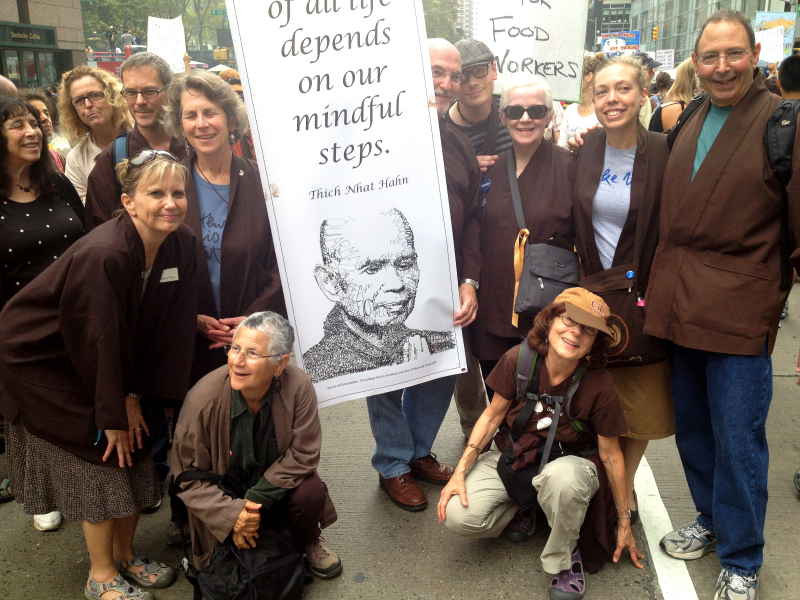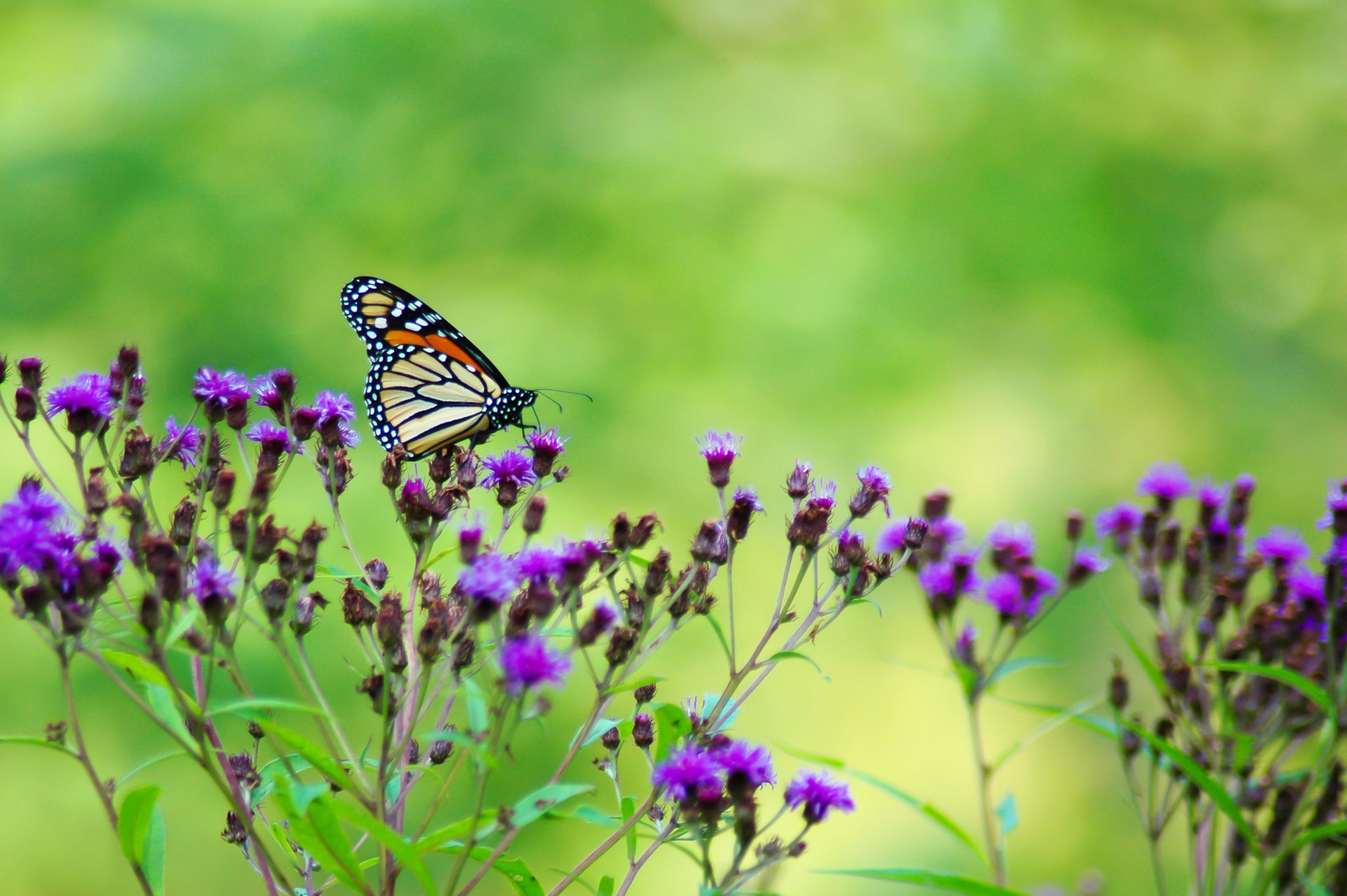Applying Meditation to Daily Life in Challenging Times
By Jack Lawlor

The past two years have been startling, haven’t they?
We go to bed one evening and wake up to find a human right—hoping for progress in relations among diverse groups—or an entire group of our world’s most vulnerable people in jeopardy. We fret over eroding civility among our leaders.
Applying Meditation to Daily Life in Challenging Times
By Jack Lawlor

The past two years have been startling, haven’t they?
We go to bed one evening and wake up to find a human right—hoping for progress in relations among diverse groups—or an entire group of our world’s most vulnerable people in jeopardy. We fret over eroding civility among our leaders. We may feel the need to protect our children and grandchildren from televised political debates or unhappy news about an at-risk group.
How do students of Thich Nhat Hanh respond?
First, don’t panic. We don’t need to wonder what Thay would do. Thay is in us. No newspaper headline or tweet changes that. When we act mindfully with love and compassion as a Sangha, Thay acts through us.
Second, take refuge in the basics of a meditation-based mindfulness practice. Why meditation-based? I have learned that I need a very deep practice to navigate today’s waters without being pitched around by waves of bad news with corresponding emotional highs and lows. In response to turbulent times, I have more than ever become devoted to pre-dawn sitting meditation. It is a small adjustment to enjoy sitting early each morning, and the fruits of a daily meditation practice are boundless.
If life is especially complicated, I don’t worry much about the length of the sitting. What‘s most helpful is to sit every day, every morning. Sit. Relax. Practice mouth yoga. Evoke memories of Thay sitting in peace. Enjoy a cleansing breath. Immerse one’s mind and body in the technique for sitting most appropriate for that day. I no longer sit judgmentally, worrying whether my breaths are smooth or choppy, slow or fast. I don’t stress if ruminations and daydreams interrupt my no-thought Zen meditation. Regardless of what my morning sitting is like, I know from experience that eight or ten hours later I may be the only calm person in the conference room, in the courtroom, in the City council chambers, at a Buddhist Peace Fellowship meeting, or at a Sangha gathering.
Morning sittings result in a more relaxed, less reactive way of living, characterized by a measure of grace and ease in these disturbing times. My experience confirms what Zen Master Hakuin proclaimed in his “Chant in Praise of Meditation”: “... the countless good deeds and the way of right living all come from zazen.” Practicing in this way, our Zen ancestors lived with great resilience through nourishing and not-so-good eras, including the incredibly violent twentieth century.
Third, take good care of our anger. When recent political disappointments began, many Buddhist practitioners wondered if the energy surge of anger might rouse people to appropriate political action. I distrust anger. Anger may be good in the moment, but it rebounds like an unguided missile, harming innocent bystanders and leading to unforeseen consequences. Even a modest expression of anger seems to grow. Anger is included among the three fetters in Buddhism—the fetters or obstructions of greed, anger, and delusion—for good reason.
Admit that anger can arise in even senior practitioners. Smile at anger when it arises, breathe in and out, embrace anger like a child rather than react, and know you are more than your anger. Plant a good seed in anger’s place; practice walking meditation, take refuge in nature, and trust a creative response will arise.
Fourth, don’t underestimate the fetter of misperception. Misperception may be a more subtle obstruction than greed or anger, but as Thay has taught us, it can cause immense suffering. When difficulty is present, we tend to think the source is only those on the other side. We look at people we think aren’t suffering and who appear to be causing immense difficulty for others. Soon, our dualistic attitude about “us” versus “them” escalates to the point that we dabble in demonizing others and can no longer even approach them for discussion.
What causes this alienation? Race, nationality, gender, sexual preference, income, personal taste? How unfortunate, unnecessary, and tragic! Misperception deserves much more attention and study for its role in giving rise to suffering. The Buddhist tradition has much to offer in our times. I vividly recall Thay’s teachings on this subject at a Magnolia Grove Monastery retreat. In response to an aging veteran’s heart-felt question about America’s motivations in the Vietnam War, Thay said he had one request for the American people: Never go to war again based on a misperception.
Finally, remember mindfulness practice is more than stress relief; it encourages us to go deeper in socially engaged and applied ways consistent with the Fourteen Mindfulness Trainings of the Order of Interbeing. Thay has taught an engaged form of meditation that embraces not only mindfulness but also concentration and insight, leading to understanding, love, and the resulting ability to know what to do and what not to do. Engaged manifestations of this wisdom appear throughout the Fourteen Mindfulness Trainings, a beacon lighting the way towards a loving and compassionate practice.
The Fourth Training urges us, from the place of equanimity and insight provided by daily sitting meditation, to look deeply at suffering in the world. When this is difficult, the Seventh Training reminds us to extend our meditation-based mindfulness to a world of action by pausing and taking refuge in the breath, rather than losing ourselves in dispersion. This approach enables us to remain engaged, untying the complexity and knots inherent in a world characterized by impermanence and interdependence. Several trainings urge us to transform anger and practice nourishing speech. Living this way enables us to be bodhisattvas even in confusing times.
The Beginning Anew verses beautifully describe our capacity to bring joy to one person in the morning and ease the pain of one person in the afternoon. This practice is feasible, especially if we act as a Sangha. Our society offers so many distractions urging us to live in a highly individualistic way characterized by acquisitive, self-serving habit energies. Regular contact with other mindfulness practitioners encourages us to slow down and be free. We have frequent opportunities to encourage each other by watering our good seeds, including our bodhicitta, our aspiration to live as bodhisattvas do. What’s always struck me about monastic centers and Sanghas in Thay’s tradition is the invitation to immerse ourselves in what’s beautiful and appropriate in life, rather than the difficulties.
I’ve seen much evidence of socially engaged transformation and healing in the context of local Sanghas that consistently take refuge in meditation-based mindfulness, giving rise to concentration that blossom into insight: the realization that others suffer just as you have. This insight enables us to write love letters to a government gone astray, in need of help. Those trained in Thay’s tradition never forget the need to pause and deliberately look deeply to see the roots of suffering, even in the aggressor, to understand what to do and what not to do to sow seeds of peace.
In this spirit of generosity, Sangha facilitators attend for decade after decade to hundreds of organizational details that make Sangha practice possible as a refuge. Sangha members learn to apply the Dharma to every facet of their lives, including families, workplaces, and community. Sangha members reconcile with long-lost family members, including estranged children. Shy Sangha members successfully see and understand where and how their talents intersect with community needs. Later, these same quiet members of the Sangha initiate food and clothing drives for refugees, organize teach-ins on issues like the need to support nuclear non-proliferation treaties, to affirm human rights and dignity at home and around the world, and to protect the environment.
In the midst of these efforts, often conducted in conjunction with other religious denominations and peace groups, I can always identify Thay’s students. Their speech is always fresh; their faces smile. They look deeply for the roots of suffering in all sides to a conflict or difficulty and share the resilient energy of our Root Teacher, who never seems to rush but accomplishes so much for the benefit of others.

Jack Lawlor, True Direction, has practiced consistently in organized Zen groups since 1975 and received Lamp Transmission from Thay in 1992. He has served as President of the Buddhist Council of the Midwest, on the National Board of Directors of the Buddhist Peace Fellowship, and on the Care-Taking Council of the Plum Village Lineage North American Dharma Teachers Council. Jack co-founded Lakeside Buddha Sangha in the Chicago area, now in its 27th year. Jack has been married to Dharma Teacher, Laurie Lawlor, for 44 years; they have two adult children and four grandchildren.

